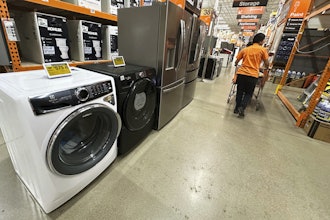
 S.Kannan
S.KannanIn my previous blog, we established that it is imperative to assess not only employee satisfaction and customer delight but also the supplier satisfaction as it completes the 360-degree perspective that organizations are keen to develop to create an environment of continuous innovation and market leadership.
Obviously, it is not rocket science to understand that supplier or vendor satisfaction primarily helps drive business prosperity downstream and ensures optimal quality, performance and cost of products and services, in turn influencing customer satisfaction.
Now, the next step is to know what and how to ask your vendors to get the most out of your supplier satisfaction programs.
What Should You Ask
Since you should be concerned about how motivated your vendors feel, the supplier satisfaction survey should primarily assess the relationship with your suppliers and provide true insights into business challenges that suppliers face while engaging with you. This helps identify and enumerate key areas of conflict and opportunities to introduce relevant process improvements.
Here are the 4 ways that can help you derive the best value out of your supplier satisfaction survey programs:
No. 1 - Start Small. Be Selective
It applies to both the cases of organizations who haven’t yet put in a formal process to measure vendor satisfaction and those who initiated but didn’t follow through as the benefits of such efforts weren’t as visible as desired. In either case, initiate qualitative interviews and in-depth assessments with the select suppliers, instead of including all. We would suggest following the 80-20 rule and conduct the survey among the 20% of your vendors that effectively provide 80% of your supplies.
No. 2- Add Subjectivity
The questions need to be drafted to measure how successful an organization has been in meeting its suppliers' expectations across a wide spectrum of parameters, such as planning, demand forecasting, scheduling, inventory and order processing, contract management, communication, collaboration, etc. Fundamentally, a supplier can be asked if its customer has been easy to engage with, if the customer has kept its promises, does the customer behaves like a true partner, does the customer challenge the status quo to help drive process and product innovation, and more.
No. 3 - Scale Up With The Ultimate Question
Quantitative surveys work best with the assessments running at a smaller scale. Going forward if you upscale your supplier satisfaction program across the wider spectrum of your vendors, we'd recommend you to implement a structured process to capture supplier feedback based on the Net Promoter Score (NPS) framework that belongs to Bain & Company, Satmetrix Systems and Fred Reichheld. The NPS framework is a customer loyalty metric that correlates the feedback with revenue growth, and basically, asks the fundamental question of whether a customer would recommend the service or solution provider to an acquaintance. Obviously, it can be adapted and tweaked to understand the feedback upstream the supply chain. You may ask your key suppliers a few questions that help calculate the NPS score. For instance, how likely are they to recommend you as a customer to their supplier community, what's the most important reason for this score and what changes would they recommend for you to adopt to get a higher score?
No. 4 - Go Deep. Cover the Hierarchy
Naturally, such surveys need to be driven across the hierarchy of supplier’s staff, anonymously by external agencies to maintain neutrality and reduce the scope of conflicting interests. Responses to such questions, if captured and analyzed properly, may lead businesses to understand the performance of key drivers of vendor satisfaction, such as profitability, growth avenue, process transparency, business continuity, fairness, clarity in communication and sense of ownership.
Interestingly, such effective supplier satisfaction measurement programs aren't prohibitively costly for organizations. While the amount of time, effort and money that need to be invested in creating such an ongoing program depends largely on the size of the organization and the number of its suppliers, our experience tells us that once initiated, the program can be configured for about $50,000 to $100,000 per annum.
I strongly believe that businesses should regularly measure the pulse of their vendors and keep track of several parameters that go beyond just the price and payment aspects. Clearly, by instituting periodic supplier satisfaction surveys, businesses will not only instill trust but also express care and commitment to their suppliers and drive mutual improvements.
Kannan Sivasubramanian is Executive Vice President at Aranca.























